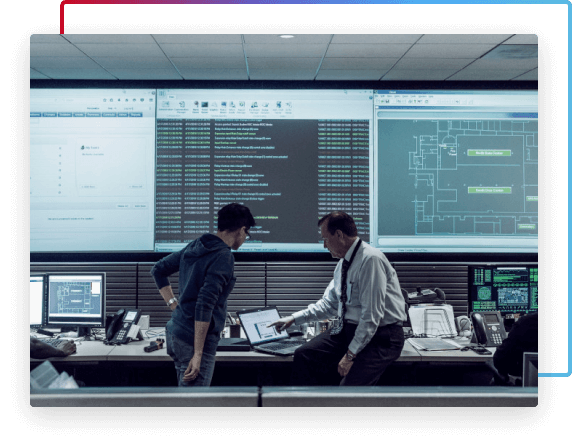Evolving attacker tradecraft calls for improved ransomware preparedness
Ransomware and multifaceted extortion has become the top threat for organizations of all shapes and sizes. These attackers have intensified their missions by threatening vital data and impacting infrastructure at such a level that in some parts of the world, it is deemed a national security threat.
As modern adversaries mature their ransomware tradecraft by operating in a more manual and targeted manner—foregoing historic automated scripts and self-spreading malware—security teams must upskill their ransomware defensive capabilities to protect their environments.
Understand your ransomware response capabilities
Security conscious organizations know that the best ransomware defense is ransomware preparedness. Assessing and mitigating your organization’s ransomware risks and understanding your team’s ransomware response capabilities can help you prevail against ransomware attacks.
The Mandiant Ransomware Defense Assessment evaluates your organization’s ability to detect, contain and remediate ransomware within your specific environment—before it cripples your operations.
How Mandiant Helps You Address This Top Threat:
This service evaluates your ability to deal with a ransomware attack. It is completed through a combination of workshops, technical reviews and attacker simulation exercises that offer an expert evaluation of your existing technical and operational security controls to effectively prevent, detect, contain and respond to the deployment of ransomware and multifaceted extortion attacks in your specific environment.
The Ransomware Defense Assessment provides three core evaluations, that can be offered separately or in any combination, surrounding your security program’s cyber defense capabilities in the event of a ransomware attack:
- Your operational capabilities and processes to combat a ransomware attack for rapid response,
- Your adversary detection effectiveness and the ability to stop a ransomware attack in-progress, and
- The configuration and architectural security posture of your Active Directory and commonly associated ransomware attack paths.
Operational Capability Evaluation
Focuses on your team’s capabilities to manage and conduct four competencies required for rapid cyber defense against a ransomware attack: security architecture, response, communications and recovery.
Adversary Detection Evaluation
Tests your team’s abilities to detect and stop a ransomware attack in-progress and demonstrates the full impact a ransomware attack can have in your environment.
Configuration and Architecture Evaluation
Assesses the Active Directory settings frequently abused and leveraged for escalation by ransomware threat actors. These findings often lead to likely attack paths in your specific environment.
Based on your organization’s specific needs, goals and objectives for ransomware readiness, there are enhancement services available for one or all Ransomware Defense Assessment core evaluation categories that can be added to any engagement at an additional cost.
Advance Your Ransomware Readiness and Reduce Ransomware Impact

Prepare for ransomware attacks and reduce organizational risk
- Understand your true exposure to sophisticated modern ransomware attacks
- Uncover existing operational deficiencies of your security program targeted by ransomware threat actors
- Identify specific organizational assets at higher risk of being affected by ransomware attacks
- Receive highly actionable technical and strategic recommendations to reduce the likelihood and impact of ransomware attacks and improve overall resilience to protect critical assets
- Prioritize budgets, investments, and resources to effectively combat ransomware attacks

Reduce your ransomware risk by applying actionable recommendations
Mandiant delivers a detailed report after completing the engagement that includes:
- Security weaknesses and gaps categorized by severity to your business
- Existing strengths of your organization’s security processes and procedures
- Prioritizations and next steps for strategic security improvements
- Technical control recommendations to enhance ransomware detection, prevention and response capabilities

Educate your security team and key stakeholders
Upon request, a technical briefing for internal stakeholders on lessons learned, as well as an executive briefing that summarizes the dangers posed by ransomware threats and potential business impact of a real attack on your organization is available.

Ransomware attackers are stealthy and deploy malware fast. Ransomware incidents move much quicker than traditional espionage incidents because there is often no incentive to stay hidden in the victim environment when their main goal is to get paid. These attackers enter the environment, deploy ransomware as quickly as possible and announce their presence to demand payment.
Ransomware Defense Assessment FAQ
A ransomware defense assessment helps evaluate an organization’s ability to detect, contain and remediate a ransomware or multifaceted extortion attack within its environment before it results in costly harm.
After discovering which critical assets could be jeopardized or lost, an organization should implement hardening techniques across its internal network to address security vulnerabilities, weaknesses and gaps commonly exploited by ransomware attacks.
The most effective security training is performed by testing and preparing security teams for real-world scanarios aligned to modern-day attacker behaviors and TTPs when deploying ransomware. Testing against hypothetical situations is generally non-productive.


